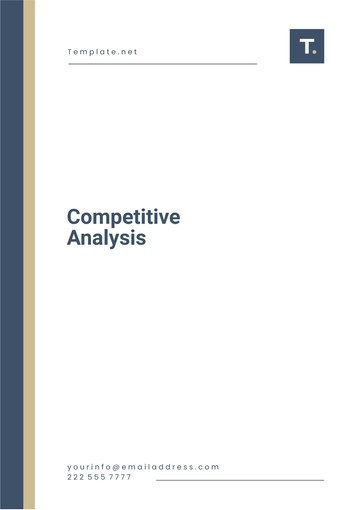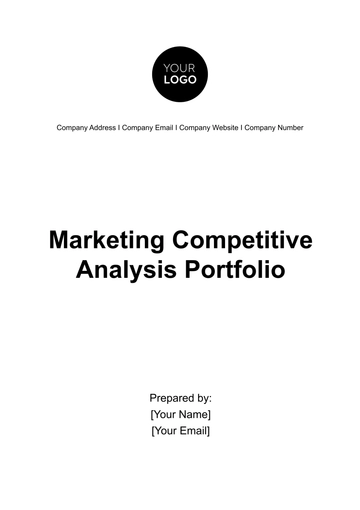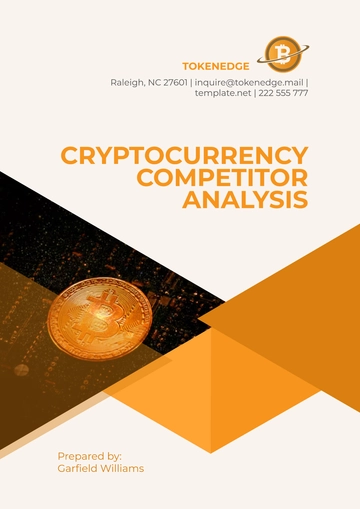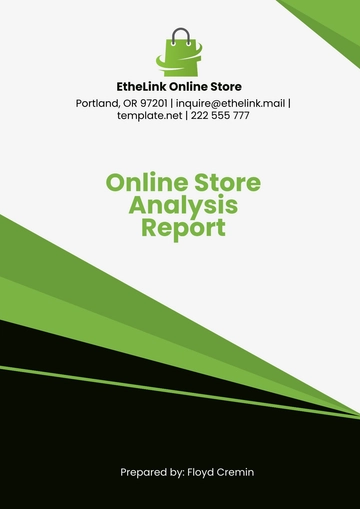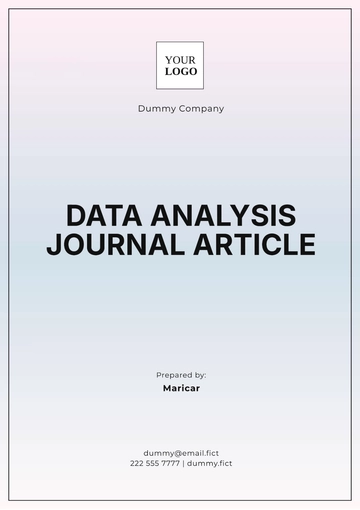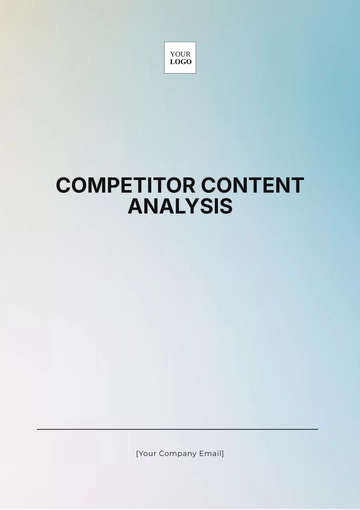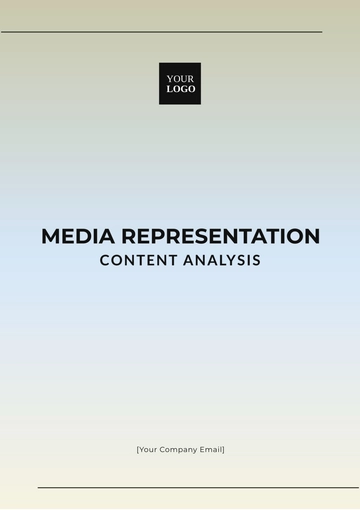Free Hotel Business Analysis

I. Executive Summary
In 2059, [Your Company Name] stands at the forefront of the hospitality industry, showcasing an impressive blend of luxury and efficiency that has earned it a stellar reputation among both leisure and business travelers. With a portfolio that includes over 150 properties worldwide, the company has demonstrated robust growth, with an annual revenue increase of 12% over the past five years. This sustained growth is attributed to strategic investments in technology, customer experience enhancements, and a strong brand presence in key markets.
Our latest financial analysis reveals that [Your Company Name] achieved a total revenue of $2.5 billion in the previous fiscal year, driven by a notable increase in both occupancy rates and average daily rates (ADR). The company's EBITDA margin has consistently remained above 30%, reflecting efficient cost management and operational excellence. Furthermore, the guest satisfaction scores have reached an all-time high of 92%, indicating a successful alignment of our service offerings with guest expectations.
As the hospitality landscape continues to evolve, [Your Company Name] remains committed to innovation and sustainability. Our strategic initiatives include the integration of artificial intelligence to enhance guest services, the implementation of eco-friendly practices across all properties, and the expansion into emerging markets. This comprehensive analysis delves into various aspects of our business, providing insights into our current performance and future strategies.
II. Introduction
A. Overview of [Your Company Name]
[Your Company Name] was established in the early 21st century and has since become a prominent player in the global hotel industry. Our commitment to providing exceptional service and unforgettable experiences has been the cornerstone of our success.
B. Market Position
Global Reach: With properties in over 60 countries, [Your Company Name] has established a significant global presence. This extensive reach allows us to attract a diverse clientele and leverage economies of scale in our operations.
Brand Strength: Our brand is synonymous with luxury and reliability. We have cultivated a strong brand identity through consistent service quality and innovative marketing strategies, which have resulted in high brand loyalty and recognition.
Competitive Advantage: Our competitive advantage lies in our ability to integrate cutting-edge technology with personalized service. This approach not only enhances the guest experience but also drives operational efficiency and cost savings.
C. Strategic Objectives
Expansion into Emerging Markets: Identifying and capitalizing on opportunities in emerging markets is a key strategic objective. We aim to establish a strong presence in regions with high growth potential, such as Southeast Asia and Africa.
Sustainability Initiatives: Our commitment to sustainability is reflected in our efforts to reduce our carbon footprint and implement eco-friendly practices. These initiatives not only benefit the environment but also resonate with the growing segment of eco-conscious travelers.
Technological Innovation: Investing in technology is crucial for staying ahead in the competitive hospitality industry. We are focusing on integrating AI and IoT to enhance guest services and streamline operations.
D. Financial Performance
Revenue Growth: Over the past five years, [Your Company Name] has experienced a consistent annual revenue growth of 12%, driven by increased occupancy rates and higher ADR.
Profitability: Our EBITDA margin has remained robust at over 30%, indicating efficient cost management and strong operational performance.
Investment in Infrastructure: Significant investments in property renovations and technological upgrades have been made to ensure our hotels remain competitive and appealing to guests.
III. Financial Analysis
A. Revenue and Profitability
The following table summarizes the revenue and profitability metrics for the past five years:
Year | Total Revenue | Revenue Growth | EBITDA Margin |
|---|---|---|---|
2055 | $1,600,000 | 10% | 28% |
2056 | $1,800,000 | 12.5% | 29% |
2057 | $2,020,000 | 12.2% | 30% |
2058 | $2,260,000 | 11.9% | 31% |
2059 | $2,500,000 | 10.6% | 32% |
Revenue Growth: The consistent increase in total revenue over the past five years highlights [Your Company Name]'s ability to adapt and thrive in a competitive market. Despite fluctuations in the global economy, our strategic initiatives and market positioning have enabled us to maintain a steady upward trajectory.
EBITDA Margin: The improvement in the EBITDA margin from 28% in 2055 to 32% in 2059 reflects our focus on cost management and operational efficiency. Investments in technology and sustainable practices have contributed to reducing operational costs, thereby enhancing profitability.
Strategic Investments: The data indicates that our strategic investments in property renovations and technological enhancements have paid off. These investments not only improve guest satisfaction but also drive revenue growth and profitability, ensuring long-term sustainability.
B. Occupancy Rates and Average Daily Rates (ADR)
The following table provides an overview of the occupancy rates and ADR for the past five years:
Year | Occupancy Rate | ADR |
|---|---|---|
2055 | 75% | $180 |
2056 | 77% | $185 |
2057 | 79% | $190 |
2058 | 80% | $195 |
2059 | 82% | $200 |
Occupancy Rates: The steady increase in occupancy rates from 75% in 2055 to 82% in 2059 demonstrates our success in attracting and retaining guests. Our marketing strategies, combined with the superior quality of our services, have contributed to higher occupancy levels.
Average Daily Rates: The upward trend in ADR reflects our ability to command higher prices due to the premium quality of our offerings. This increase is indicative of our strong brand positioning and the value guests place on our services.
Market Demand: The consistent rise in both occupancy rates and ADR suggests a robust demand for our properties. This trend underscores the effectiveness of our market strategies and the appeal of our brand to a diverse clientele.
IV. Market Analysis
A. Industry Trends
Technological Integration: The integration of technology in hotel operations is a significant trend shaping the industry. Innovations such as AI-powered concierge services and smart room technology are enhancing guest experiences and operational efficiency.
Sustainability Practices: There is a growing emphasis on sustainability within the hospitality industry. Eco-friendly practices, such as energy-efficient buildings and waste reduction initiatives, are becoming standard as both guests and stakeholders prioritize environmental responsibility.
Personalization and Customer Experience: Personalized services are increasingly important in the hotel industry. Leveraging data analytics to offer tailored experiences helps in improving guest satisfaction and loyalty.
B. Competitive Landscape
Key Competitors: Our primary competitors include global hotel chains that also emphasize luxury and technology. These competitors are continuously evolving their strategies to capture market share.
Market Share: [Your Company Name] holds a significant market share in the luxury segment, thanks to our strong brand and innovative services. Our ability to differentiate ourselves through technology and sustainability gives us a competitive edge.
Barriers to Entry: The high capital investment required for establishing luxury hotels acts as a barrier to entry for new competitors. Our established brand and extensive property portfolio further solidify our market position.
C. Customer Demographics
Leisure Travelers: Leisure travelers form a substantial part of our clientele, seeking premium experiences and exceptional service. Our resorts and luxury hotels are particularly popular among this segment.
Business Travelers: Business travelers value our strategically located properties and advanced amenities. Our focus on technology and convenience caters well to this demographic.
Emerging Markets: There is a growing interest from customers in emerging markets, driven by rising disposable incomes and increased travel aspirations. Expanding our presence in these regions is a key focus area.
V. Operational Analysis
A. Technology Integration
AI-Powered Services: The implementation of AI-powered services, such as virtual concierges and automated check-in processes, has significantly enhanced the guest experience. These technologies not only improve efficiency but also provide personalized service to guests.
Smart Room Technology: Smart room technology allows guests to control various aspects of their room environment, such as lighting and temperature, through their mobile devices. This innovation has been well-received and contributes to guest satisfaction.
Data Analytics: Utilizing data analytics enables us to better understand guest preferences and tailor our services accordingly. This approach helps in anticipating guest needs and enhancing their overall experience.
B. Sustainability Initiatives
Energy Efficiency: Our properties are equipped with energy-efficient systems, such as LED lighting and smart thermostats, which reduce energy consumption and operational costs. These initiatives align with our commitment to sustainability.
Waste Reduction: Implementing waste reduction practices, such as recycling programs and minimizing single-use plastics, has been a priority. These efforts not only benefit the environment but also resonate with eco-conscious guests.
Sustainable Sourcing: We prioritize sustainable sourcing for our food and beverage offerings. Partnering with local suppliers and using organic products enhances the guest experience while supporting the local economy.
C. Customer Service Excellence
Training Programs: Comprehensive training programs for our staff ensure high standards of service. These programs focus on enhancing interpersonal skills, cultural sensitivity, and problem-solving abilities, which are crucial for delivering exceptional guest experiences.
Feedback Mechanisms: Implementing robust feedback mechanisms allows us to continuously improve our services. By actively seeking and responding to guest feedback, we ensure that we meet and exceed their expectations, fostering loyalty and positive reviews.
Personalized Services: Offering personalized services, such as customized room settings and tailored recommendations, enhances the overall guest experience. By leveraging technology and data analytics, we can anticipate and fulfill individual guest preferences.
VI. Customer Satisfaction Analysis
A. Guest Feedback and Satisfaction
The following table summarizes our guest satisfaction scores over the past five years:
Year | Guest Satisfaction Score | Positive Reviews | Negative Reviews |
|---|---|---|---|
2055 | 88% | 90% | 10% |
2056 | 89% | 91% | 9% |
2057 | 90% | 92% | 8% |
2058 | 91% | 93% | 7% |
2059 | 92% | 94% | 6% |
Guest Satisfaction Trends: Our guest satisfaction scores have steadily increased from 88% in 2055 to 92% in 2059. This positive trend reflects our ongoing efforts to enhance the guest experience through superior service and amenities.
Positive Reviews: The percentage of positive reviews has also seen a consistent rise, reaching 94% in 2059. This indicates that a significant majority of our guests are highly satisfied with their stay, which is crucial for building brand loyalty and encouraging repeat visits.
Negative Reviews: The decline in negative reviews from 10% to 6% over the same period highlights our ability to address and resolve guest concerns effectively. This improvement suggests that our customer service initiatives are having a tangible impact.
B. Key Drivers of Satisfaction
Quality of Service: The professionalism and friendliness of our staff are consistently highlighted as major factors contributing to guest satisfaction. Regular training programs and a strong focus on customer service excellence are key drivers behind these positive perceptions.
Facility Upgrades: Recent renovations and upgrades to our properties have significantly enhanced the guest experience. Modern amenities, comfortable accommodations, and state-of-the-art facilities are frequently mentioned in positive reviews.
Personalized Experiences: Offering tailored services and personalized experiences has been a major factor in increasing guest satisfaction. From custom room settings to personalized recommendations, our efforts to meet individual guest preferences have been well-received.
C. Areas for Improvement
Check-in and Check-out Processes: While generally positive, some feedback suggests a need for further streamlining of our check-in and check-out processes. Implementing additional self-service options and reducing wait times can enhance the overall guest experience.
In-room Technology: While our smart room technology is appreciated, there are opportunities to further integrate and improve these systems. Ensuring seamless functionality and user-friendly interfaces will enhance guest satisfaction.
Dining Options: Some guests have expressed a desire for more diverse dining options, particularly those catering to dietary restrictions and preferences. Expanding our menu offerings to include a wider variety of cuisines and dietary options can address this feedback.
VII. Human Resources and Workforce Management
A. Workforce Composition
The following chart and table provide the overview of our workforce composition as of 2059:
Employee Category | Number of Employees | Percentage of Total Workforce |
|---|---|---|
Management | 1,000 | 20% |
Administrative Staff | 1,000 | 20% |
Hospitality Staff | 3,000 | 60% |
Total | 5,000 | 100% |
Management: Our management team constitutes 10% of the total workforce, reflecting our commitment to maintaining a strong leadership presence. These individuals are responsible for strategic decision-making and operational oversight.
Administrative Staff: Comprising 20% of the workforce, our administrative staff handles essential functions such as reservations, guest services, and back-office operations. Their efficiency is critical to the smooth running of our hotels.
Hospitality Staff: The majority of our workforce, at 60%, consists of hospitality staff who directly interact with guests. This category includes front desk personnel, housekeeping, and food and beverage staff, all of whom play a vital role in delivering exceptional guest experiences.
B. Employee Training and Development
Training Programs: We offer comprehensive training programs that cover various aspects of hospitality, including customer service, cultural sensitivity, and technical skills. These programs ensure that our employees are well-equipped to meet the needs of our diverse clientele.
Career Development: Providing opportunities for career advancement is a key focus area. We offer mentorship programs, leadership training, and pathways for promotion to help employees grow within the company.
Employee Satisfaction: Regular employee satisfaction surveys indicate a high level of engagement and job satisfaction. Our commitment to fostering a positive work environment and offering competitive benefits contributes to our low turnover rates.
C. Diversity and Inclusion
Diversity Initiatives: We prioritize diversity and inclusion in our hiring practices and workplace policies. Our workforce reflects a wide range of cultural backgrounds, enhancing our ability to serve a global clientele.
Inclusive Culture: Creating an inclusive culture where all employees feel valued and respected is a key priority. We conduct regular training on diversity and inclusion and have established support networks for underrepresented groups.
Community Engagement: Engaging with local communities and supporting local talent is an integral part of our diversity strategy. We partner with local organizations to provide training and employment opportunities to community members.
VIII. Risk Management
A. Identification of Risks
Market Risks: Fluctuations in the global economy can impact travel and tourism, affecting our occupancy rates and revenue. Monitoring economic indicators and adjusting our strategies accordingly helps mitigate these risks.
Operational Risks: Risks associated with daily operations, such as service disruptions, safety incidents, and technology failures, can impact guest satisfaction and operational efficiency. Implementing robust operational protocols and regular training helps address these risks.
Regulatory Risks: Changes in regulations, such as those related to labor laws, environmental standards, and health and safety, can pose compliance challenges. Staying informed about regulatory developments and ensuring compliance is critical.
B. Risk Mitigation Strategies
Diversification: Diversifying our property portfolio across different regions and market segments helps mitigate market risks. This approach ensures that we are not overly reliant on any single market or region.
Crisis Management: Establishing a comprehensive crisis management plan enables us to respond effectively to emergencies. Regular drills, clear communication protocols, and contingency plans are essential components of our strategy.
Technology Upgrades: Investing in reliable and advanced technology systems reduces the risk of operational disruptions. Regular maintenance, updates, and cybersecurity measures are crucial for protecting our operations and guest data.
C. Insurance and Financial Protection
Insurance Coverage: We maintain comprehensive insurance coverage to protect against various risks, including property damage, liability, and business interruption. Regular reviews of our insurance policies ensure adequate coverage.
Financial Reserves: Building and maintaining financial reserves provides a buffer against unexpected expenses and economic downturns. This practice ensures financial stability and the ability to sustain operations during challenging times.
Risk Assessment: Conducting regular risk assessments helps identify potential vulnerabilities and develop appropriate mitigation strategies. These assessments involve collaboration across departments and input from external experts.
IX. Conclusion
[Your Company Name] has demonstrated remarkable resilience and adaptability in the ever-evolving hospitality industry. Our strategic focus on technology integration, sustainability, and customer experience has positioned us as a leader in the market. The consistent growth in revenue and profitability, coupled with high guest satisfaction scores, underscores the effectiveness of our strategies.
As we look to the future, we remain committed to continuous improvement and innovation. By expanding into emerging markets and further enhancing our service offerings, we aim to sustain our growth trajectory and solidify our position as a premier global hotel brand. Through our unwavering dedication to excellence, we will continue to deliver exceptional experiences that exceed the expectations of our guests.
- 100% Customizable, free editor
- Access 1 Million+ Templates, photo’s & graphics
- Download or share as a template
- Click and replace photos, graphics, text, backgrounds
- Resize, crop, AI write & more
- Access advanced editor
Optimize your hotel's performance with the Hotel Business Analysis Template from Template.net! This editable template provides a structured format for evaluating various aspects of your business. Its customizable design and the AI Editor Tool helps adjust and enhance the analysis, making it a powerful tool for driving growth and efficiency!
